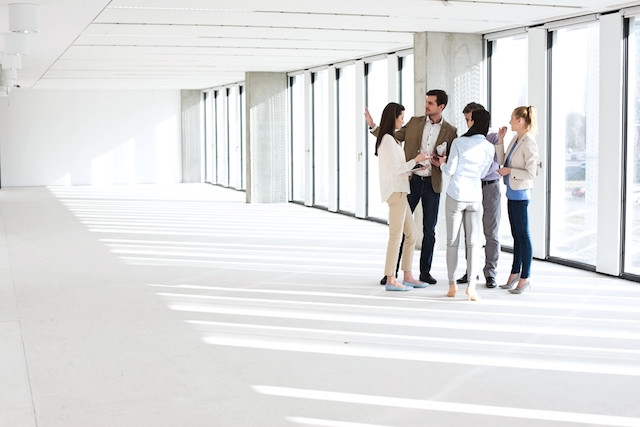Luxembourg real estate investment firm Jones Lang LaSalle on Tuesday revealed that average vacancy rates had reached acute levels in Kirchberg, the central business district and station during the last quarter of 2018, at 1%, 2% and 2% respectively, prompting comparisons with 1998 when the vacancy rate was just 0.5%.
“It was a real headache for businesses,” JLL Luxembourg managing director Romain Muller told Delano, adding: “I think there’s a risk this will happen in certain districts where the vacancy rate is very low and where companies will be slowed in their internal growth because they can’t find an appropriate location for their growing teams.”
He cited the issues experienced by big 4 firms KPMG and PwC, which recently moved into new offices and are already tight for space.
Record year
2018 was a year of records for Luxembourg in terms of office space with the total office surface passing the 4 million square metres barrier to 4.1m. Take-up reached 245,000 sqm and the overall vacancy rate fell from 4.8% in 2017 to 3.4%.
The surface of new office space completed in 2018 doubled that of 2017 at 102,000 sqm. Demand, meanwhile, is ramping up and Muller said this was evident in the fact that certain offices are being rented out before they become vacant.
In 2018, office demand was driven mostly by the needs of the banking and finance sector, which accounted for 44% of take-up, but also by public administration, responsible for 16%.
The growing global demand pushed up average rents, from €47 per square metre in 2017 to €50 in 2018.
Easing demand in key areas
To alleviate pressure in the CBD, Kirchberg and Gare, Muller advocated for an expansion of the tram system, saying that public transport provision such as the tram was a key factor for companies looking for office space. “I think that Luxembourg could still invest more in the tram, in the city and in other districts,” he said, adding: “Leudelange, Mamer, they speak about expanding to the area behind Kirchberg. For me the future development of Luxembourg will be carried out mainly around public transport, whether it’s the tram, which I hope will expand further, or new train stations, or other means.”
He also proposed the creation of a nationwide standardisation of commercial taxes or ICC (currently set by commune). “A harmonisation of the ICC would be good to give companies a neutral choice globally,” Muller said, adding it would help reduce the environmental impact if it meant companies could move closer to their workforce or to an area well-served by public transport, such as Belval.
On the subject of Belval…
Muller noted that Belval, in the south of Luxembourg, along with the Ban de Gasperich, remained business districts with potential to exploit. Average rents remained at the mid to lower end (€24/sqm in Belval and €30/sqm in Ban de Gasperich). “I think the big sites of the future will be in Ban de Gasperich and Belval,” he said.
